READY TO GET STARTED?
REQUEST A FREE ESTIMATE
Fill out the form below or call (888) 466-7849 for a free, no-obligation estimate.
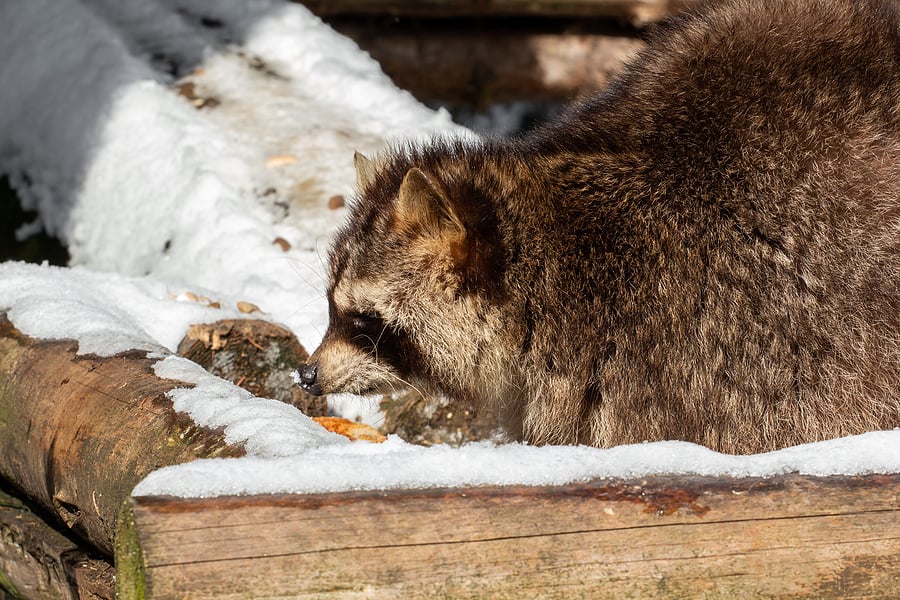
When cold weather hits, winter wildlife go in search of three things: food for their bellies, water to quench their thirst, and warm shelter to keep them safe. When the going gets tough, these winter pests have to get creative in order to survive – often by making their way into your attic, chimney, basement, or crawlspace. While it’s beneficial for them, it can cause serious damage to both your home and your health to have them sharing space with you.
How do you know if you have a stowaway for the winter? Common signs of wildlife include:
Now that you know what to look for, what kinds of animals can cause these signs? Some of the most common winter wildlife include:
Prevention is key to avoiding a winter wildlife invasion. Critter control starts at home with these winter wildlife prevention tips:
Chimneys provide a great hideout and also a gateway for wildlife to get into your home. Make sure the top of your chimney has a grated screen that is in good repair with no holes. Check above the flue panel for any leaves, debris, droppings, or animals before sealing it up. Make sure your chimney is secure.
Small holes, cracks, open pipes, etc. in your foundation provide easy routes for wildlife to get into your home. A careful inspection of your foundations should be performed every season throughout the year. Seal any openings as you find them.
Any tiny cracks or openings in your roof or siding means easy access to your attic. Check the entire exterior of the roof, starting with the intersections and siding. Make sure to also check the flushing seams on the roof. Siding that connects to the roof should not be warped or pulled away. Be sure to check around exhaust openings and for loose vent screens, as well.
Many wildlife critters love to hide out in the attic. Use a flashlight or headlamp and thoroughly inspect this space, checking for openings or chewed up or damaged areas of wood. Seal any holes you find but always make sure the animals are not still present before you do.
Your trashcans offer a buffet of food sources for pests. Use cans with tightly securing lids, avoid overfilling them, and wash the bins regularly to get rid of food waste.
Branches and limbs offer squirrels, raccoons, and other creatures a bridge directly into your home. Keep trees and shrubs trimmed away from the house. Prune shrubs to keep them at least 12″ from the sides of your home. Trim any branches that overhang or touch your roof, as well.
Leaving food sources outside your home will just attract wildlife in. Try to avoid leaving pet food outside and tossing scraps or pouring leftover grease in the yard. Pick up any fallen fruit. Protect your gardens with fences that are designed to keep animals out. Clean up any spilled birdseed from feeders and bring them in overnight.
Wildlife control is an ongoing process that needs special attention and consideration, especially in the cold winter months. If you have a problem with winter wildlife, contact your local pest control company for an inspection and appropriate treatment or wildlife exclusion plan.
4 Pests That Are Closer Than You Think!
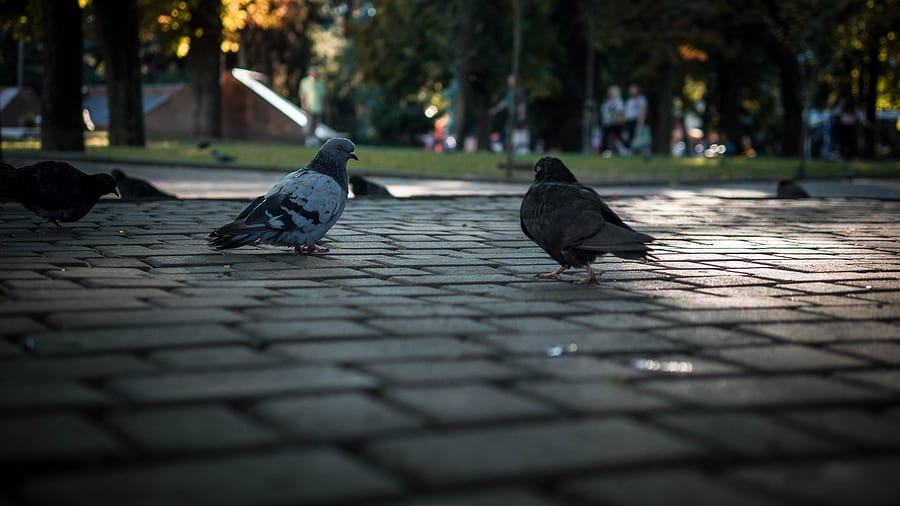
While some people consider pigeons a minor nuisance, they can actually be harmful to humans. Pigeons are the most common nuisance bird and are also responsible for the worst public health concerns caused by birds. Pigeons are capable of spreading more than 60 pathogens to humans, mostly through their droppings. Besides the obvious means of transmission by handling pigeon feces, what many don’t realize is pigeon droppings that are left on cars, windowsills, and even the street can dry into a powder that can be blown into the air and inhaled. The most common diseases spread by pigeons are E. coli, histoplasmosis, and salmonellosis.
Pigeons are also capable of damaging and destroying your property. Nests can interfere with the functioning of air conditioning units and electrical elements. Pigeon droppings can also accumulate, causing surfaces to become slippery. Their feces can also deface and deteriorate buildings and other structures.
Pigeons prefer to nest in small, flat areas that are off the ground (e.g. ledges, air conditioning units, pipes, and window sills). They eat a varied diet, consuming anything from grains and livestock feed to discarded food scraps and manure. They must have water daily to survive.
Pigeons adapt easily to their environments, including those that are manmade. They will travel up to 5 miles between their nesting and roosting sites, making it very difficult to get an established flock to move. Their homing capabilities allow them to easily find their way back to their original nesting sites.
Get rid of nuisance pigeons with these bird prevention tips:
If you suspect you have a problem with pigeons or any other nuisance pests, contact a professional pest control company for a free evaluation.
Are Termites Active Right Now?
A New Year’s Resolution: Keeping Pest-Free!
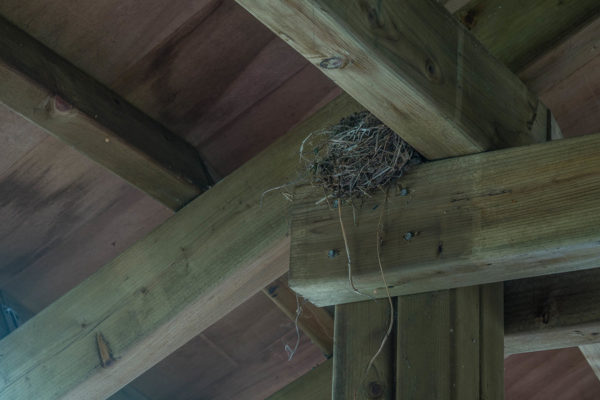
While some birds are beneficial to us through their production of down feathers, control of pests, control of weeds, and providing us with the opportunity for birdwatching, they can be detrimental to our homes and our health. Besides being a general nuisance, some birds can cause damage to buildings and monuments, contaminate food sources, and transmit diseases that can be serious to humans.
Three of the most common nuisance birds that can cause these issues to humans are pigeons, sparrows, and starlings. Here is a look at each of these nuisance birds, as well as some tips to prevent and exclude them.
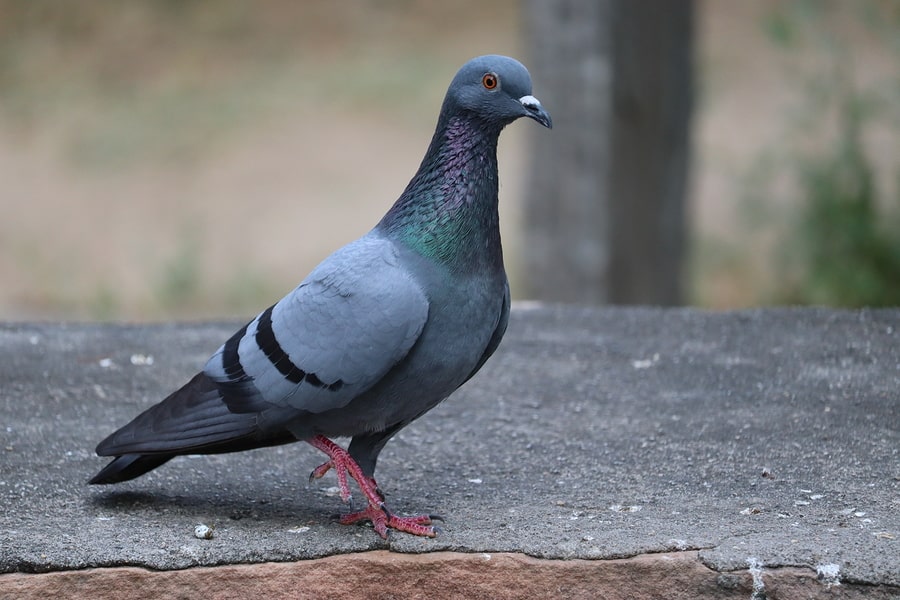
Pigeons are the most common nuisance bird and are also responsible for the worst public health concerns caused by birds.
Adult pigeons are about a foot in length and weigh about 13 ounces. They are blue-grey in color with iridescent feathers on their heads and necks. Pigeons have short necks, small heads, and short legs.
Pigeons prefer to nest in small, flat areas that are off the ground (e.g. ledges, air conditioning units, pipes, and window sills). They eat a varied diet, consuming anything from grains and livestock feed to discarded food scraps and manure. They must have water daily to survive.
Pigeons can cause serious problems wherever they are. Large flocks of pigeons can be a nuisance in public places. Their feces can not only deface and deteriorate buildings and other structures but can also cause slipping hazards on stairs, sidewalks, and fire escapes. Their droppings and debris from their nests can clog downspouts and machinery. Pigeons carry numerous diseases including histoplasmosis.
Pigeons adapt easily to their environments, including those that are manmade. They will travel up to 5 miles between their nesting and roosting sites, making it very difficult to get an established flock to move. Their homing capabilities allow them to easily find their way back to their original nesting sites.
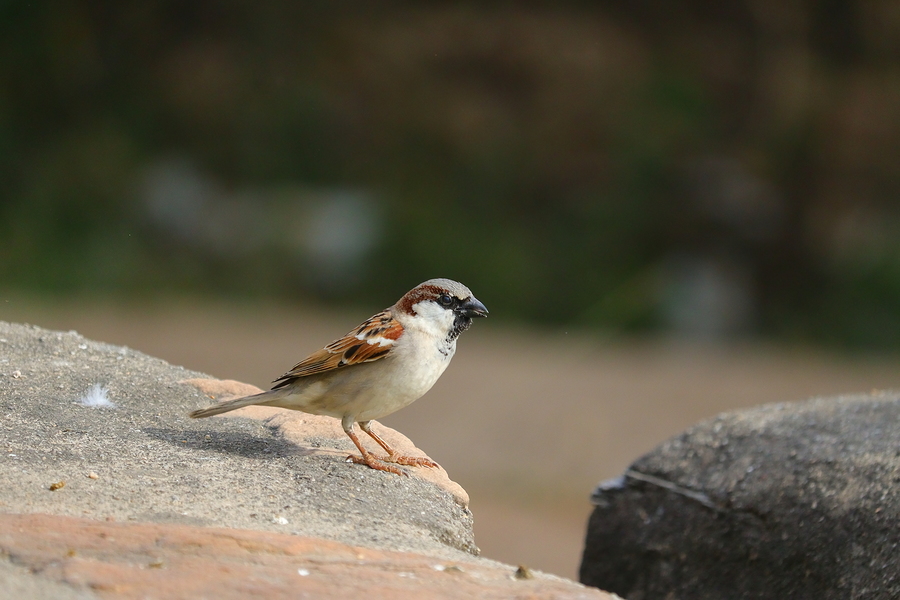
House sparrows are not actually true sparrows; they actually belong to a family called weaver finches. They are stocky, small birds about 5 to 6 inches in length and weighing about 1 ounce. They have conical bills with brown grey feathers. Males have a black throat and white crown while females have a white throat and a dull eye stripe.
Sparrows build extremely messy nests out of anything they can find (string, twigs, paper, grass). They prefer to make their nests in covered, elevated areas like warehouses, airport hangars, and stadiums.
Sparrows primarily eat grain but have also been known to eat fruit, seeds, insects, and food scraps. They have become extremely dependent on humans for both food and shelter. They nest, roost, and feed in large groups within 1 to 2 miles of each other.
Sparrows can be difficult to control because of their ability to rapidly reproduce. They are extremely aggressive and will often drive out other desirable bird species from the area. When they nest in electrical areas they can cause electrical shorts and fires. When they congregate in poultry and hog farms they cause potential contamination threats. Sparrows have been associated with over 25 diseases and ectoparasites.
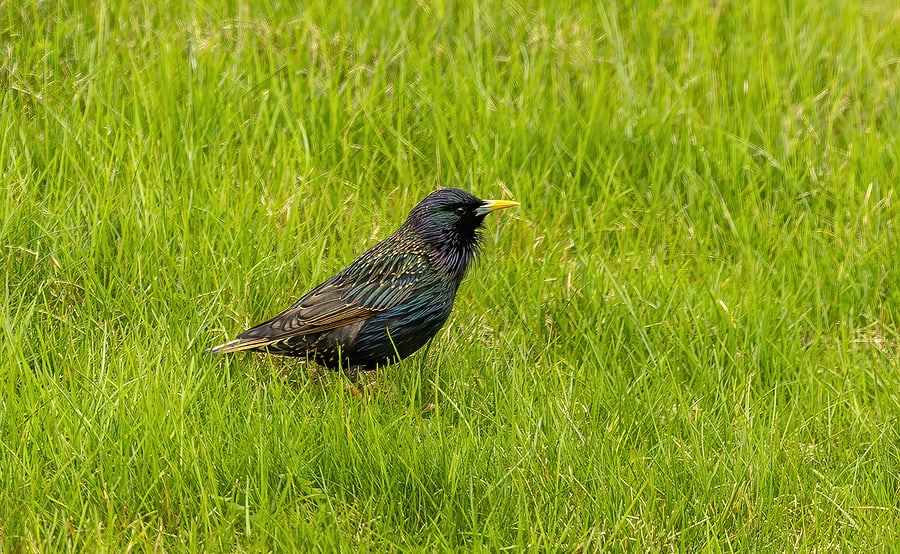
Starlings are an introduced species that cause problems in both urban and rural areas. Adult starlings are about 8 inches in length and weigh about 2-1/2 to 3-1/2 ounces. They have short tails and long bills. In the winter, starlings have dark bills and iridescent coats speckled with white dots. In the summer, starlings have yellow bills with duller coats that are mostly purple and green in color and are less speckled.
Starlings travel in flocks that can number into the thousands. They nest and feed in a variety of areas. When they nest in urban areas they tend to frequent trees, exhaust vents, marquees, ledges, lighted signs, hollow lampposts, billboards, soffits, and dryer and stove vents. In rural areas they tend to nest in farm building ledges and tree cavities.
Starlings feed on a variety of things depending on what season it is and what food sources are available. They are known to eat seeds, fruit, food scraps, insects, fruit, and vegetables.
Starlings can be problematic because of their intense vocalization, especially when their flocks grow to such large numbers. Their fecal accumulation can also be problematic because of the sheer volume. Starlings are very aggressive and can drive out other bird species. Their feces can deface and deteriorate buildings and other structures; can cause slipping hazards; can contaminate livestock feed; and can kill trees. They leave nesting materials behind that can clog machinery, cause drainage problems, and clutter structures. These blocked vents can also lead to moisture buildup, odor issues, and potential fire risks. They are known to carry serious diseases like histoplasmosis.
Each of these nuisance birds can be hard to control or eliminate once their flock is established. Prevention and elimination is key to helping control these bird populations. Here are some bird prevention and exclusion tips you can use to help control these problematic pests.
If you have a nuisance bird problem, contact a professional pest control company who can provide you with a customized inspection and treatment plan for your situation.
The When, Where, and Why of Termite Swarms
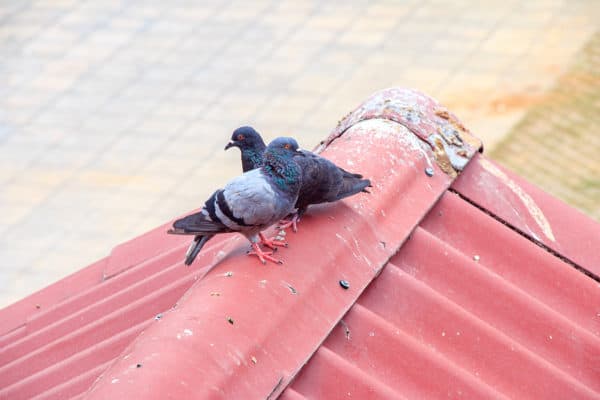
Some birds are beautiful and fun to watch, while others can be downright annoying and destructive. While birds aren’t typically considered a nuisance pest, they can become a problem when their nests obstruct important areas in your house, their droppings carry transmittable diseases, or they get into your attic or chimney.
Understanding what nuisance birds are attracted to is the first step in helping to prevent them. Pest birds such as crows, pigeons, sparrows, robins, and starlings are attracted to food sources they can find around your home (insects, earthworms, corn, seeds, and rotten fruits and vegetables). Woodpeckers are also a common nuisance bird and will drill into your trees in search of carpenter ants, beetles, and other wood-boring insects.
Birds can be attracted to pet food which is often left outside all day for them to feast on. Birds also require water to survive and will use your fountain, water feature, or any other standing water on your property as a birdbath.
While professional bird control is always an option, there are some bird prevention tips you can use at home to help keep birds away. Here are 5 of our favourite DIY bird-repellent methods.
If there isn’t anything in your yard to attract birds, they will be less likely to hang around.
Most birds require freshwater to survive. Substitute saltwater for freshwater in your fountains and water features so birds won’t be able to drink from them. If you feed your pets outdoors, remove or cover their food and water dishes as soon as they’re done with them. Make sure pet food is kept in airtight containers.
Birds also like to take cover in grass and other landscaping, especially in windy or stormy conditions.
Make sure grass is kept mowed, and hedges and trees are kept trimmed to help reduce cover. If you see a bird actively building a nest, use a long stick to dismantle it. Once you do this a few times, the bird will move on to a new nesting site.
If the nest is already built or occupied by the bird, don’t attempt bird nest removal yourself. There are laws in each state regulating the removal of bird nests. Contact a professional wildlife exclusion company to help properly remove or relocate the bird’s nest in question.
One of the easiest and cheapest natural bird repellents is aluminum foil. There are several different ways you can use aluminum foil to keep birds away. If birds are disturbing your garden, you can place strips of aluminum foil under the surface of the dirt or around any plants they are bothering. Birds don’t like the feel of the foil under their beaks and will stay away.
You can also hang strips of aluminum foil (or shiny party streamers) from the trees or other high points around your home and garden. The sun reflects off the shiny surface and bothers their eyes, deterring them from coming near. If woodpeckers are around, hang an aluminum pie plate on the tree where you see them most often. The reflection of the plate will scare the woodpeckers off.
If birds are constantly landing in or near your pool, try running fishing wire high over the pool in a criss-cross pattern. You can hang it between 2 trees, between eaves, or from any other high locations you might have near your pool. The birds don’t like the impediment to their flying space and will find somewhere else to land. As a bonus – you won’t be able to see the clear fishing wire from the ground so it doesn’t take away from the aesthetics of your backyard space.
If pigeons and other nuisance birds are invading your patio space or window sills, try sprinkling baking soda anywhere they like to perch. Birds don’t like the feel of the baking soda under their toes and will avoid it at all costs. You can also use double-sided duct tape instead of baking soda.
If birds are a problem around your garden, pool, or deck, you can purchase one (or several) predator decoys at your local hardware store to scare them away. As the birds fly overhead, they will see the plastic owl, rubber snake, or whichever other decoy you choose and won’t land near it. Just make sure you move your decoys around often or the birds will get used to them and realize they aren’t real.
The more deterrents you have around your property, the less likely you are to have birds hanging around. If these methods don’t work or you already have an existing bird issue, contact a professional bird control company who can help you safely and effectively remove the nuisance birds and put measures in place to prevent them from coming back in the future.
How to Avoid a Rat Invasion During a Pandemic
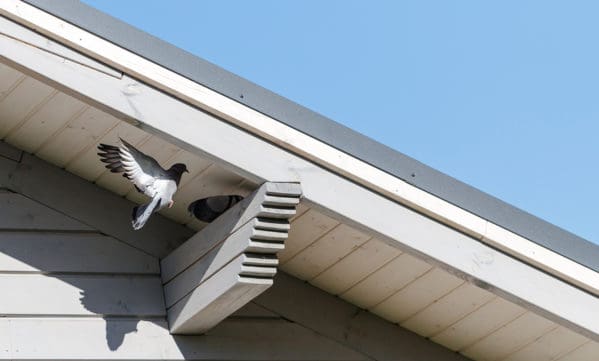
While most birds aren’t considered parasites, they can become quite a nuisance. Birds can be helpful in some ways: feeding on predator insects and eating the seeds of pesky weeds that can overtake your garden; but birds can also be pests by feeding on the fruits and veggies in your garden, causing damage to your home and other structures on your property, and leaving droppings that can lead to serious health risks to you and your family. Because it is illegal to kill most species of birds and remove or destroy the nests of other species, homeowners are only left with a few options when it comes to bird control: natural repellents that deter birds away from certain areas around your home and professional wildlife exclusion to safely and humanely remove or relocate nuisance birds. Here are five home remedies to keep birds away:
Shiny, reflective objects make great deterrents for problematic birds. The reflection of light off of these objects discourages birds from returning to these areas. These shiny objects, such as old CDs, aluminum cans, tin foil, small mirrors, or even metallic wrapping paper, can be hung near nesting or landing areas frequented by the problematic birds.
Birds have many natural predators including cats, owls, and larger birds of prey. Placing objects in the shape of these predators around areas frequented by nuisance birds can deter them from nesting or landing near them. These objects can be made of wood, metal, or any other material that can withstand the outdoor environment. Make sure to move these objects around every few days or the birds will get acclimated to them and begin to ignore them.
Round garden balls, which are large colorful balls that can be placed in your garden or hung from trees, fence posts, and stakes are a natural bird repellent. Birds will confuse these spherical orbs with eyes and try to avoid them. They also can be great decorations for your yard or garden.
Bird spikes are long, needle-like rods used for bird control. These spikes can be made of tin or plastic cans and placed in the dirt or attached with wire to window sills and overhangs. They can also be made by hammering nails into wood. Birds find these spikes uncomfortable and won’t land on them, keeping them away from problematic areas around your home.
There are several versions of bird repellent sprays you can make at home but the most popular is a concoction of chili peppers, water, and vinegar. To make this spray, crush dried red or green chili peppers into a mixture of water and vinegar. This mixture can either then be heated in a crock pot for a few hours to infuse or placed in a clear glass in the sunlight for a natural infusion. Once finished, place the repellent in a plant mister and spray any areas where birds are causing problems.
If you try these home remedies and you still have an issue with birds, your other option is to contact a professional pest control company who specializes in wildlife control who can come and thoroughly evaluate your home to help determine not only the species of bird you are dealing with, but also the best course of treatment that is both legal and effective.
New Year, New Termite Protection
6 Things You Should Know About Ants in the Kitchen